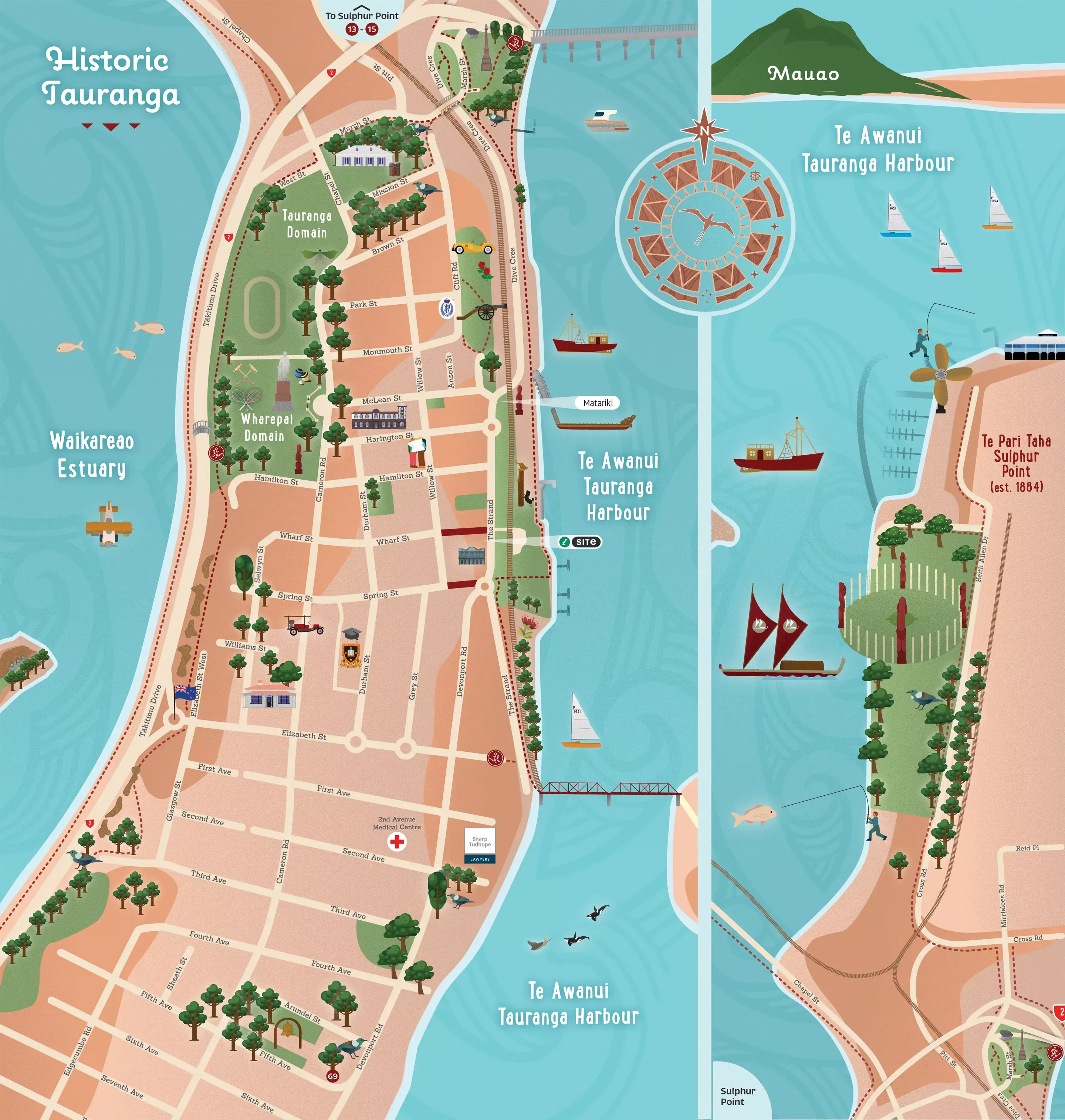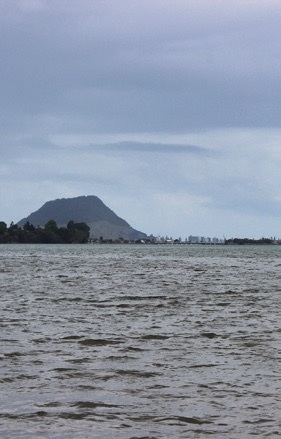Use + scroll to zoom the map

Often found off Te Pari Taha | Sulphur Point (15), haku have bright yellow fins and can grow to 1.7 m long and weigh up to 56 kg. For more information, visit NIWA, the National Institute of Water and Atmospheric Research.

193 Cameron Rd, 3110

193 Cameron Rd, 3110
Found in the Waikareao Estuary, many of the spawning grounds of īnanga have been destroyed and the species are At Risk/Declining. For more information, visit the Department of Conservation.

193 Cameron Rd, 3110
The kawaupaka has the most variable plumage of any New Zealand shag. Nests in a pōhutukawa tree at Monmouth Redoubt (23). For more information, visit New Zealand Birds Online.

193 Cameron Rd, 3110

193 Cameron Rd, 3110

193 Cameron Rd, 3110
Most often seen in June, and again from October to December foraging for stingrays near the Matapihi Railway Bridge (64). For more information, visit Te Ara - the Encyclopedia of New Zealand.

193 Cameron Rd, 3110


The smallest species of penguin lives on Mauao and is thought to still nest in the cliffs at the end of First Avenue. For more information, visit New Zealand Birds Online.

Possibly still nests in cliffs at end of First Ave, and on Mauao

A distinctive bird with a green-blue back, buff to yellow undersides and a large black bill. Found all over Te Papa Peninsula. For more information, visit New Zealand Birds Online.


Found all over Te Papa Peninsula. For more information, visit New Zealand Birds Online.
They perform the longest nonstop flights of any non-seabird! Forages on the intertidal mudflats of Waikareao Estuary and roosts at the Port of Tauranga. For more information, visit New Zealand Birds Online.
Now only seen occasionally by the Chapel Street Bridge (13), the matuku moana is a dark grey wading bird with an estimated population of only 300-500. For more information, visit New Zealand Birds Online.
A dainty wading bird with very long pink legs and a long, fine, black bill, the poaka can be found around wetland and coastal areas. For more information, visit New Zealand Birds Online.
Raupō wetlands provide valuable habitat for wildlife. Found alongside Tākitimu Drive near Waikareao Estuary, the plant has many uses. For more information, visit Manaaki Whenua | Landcare Research.
This nocturnal bird is found on Te Papa Peninsula and Mauao, its distinctive “more-pork” call commonly heard at night. For more information, visit New Zealand Birds Online.
The population has declined markedly over the last 40 years and is currently regarded as At Risk/Declining. They used to nest on the poles outside the Harbourside Restaurant (65) but this has ceased since the poles they nest on have been capped to prevent them nesting there during the construction of the new pier. They still nest on the Hairini Bridge, but sadly now in low numbers.
For more information, visit New Zealand Birds Online.
They hang out at Fisherman's Wharf (32), taking advantage of those eating at Bobby's. Nests at the Port of Tauranga. For more information, visit New Zealand Birds Online.
Often seen in Te Awanui | Tauranga Harbour, whai can grow to four metres long and have serrated, poisonous spines at the base of their tails. For more information, visit New Zealand Geographic.
Fifth Avenue to Sulphur Point
Zoom, scroll, swipe or drag to move the map around and click/tap on locations and fauna to explore the historic Te Papa Peninsula (north). Read more in Directions.
Showing 1 of 72
